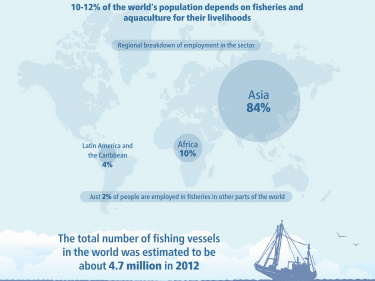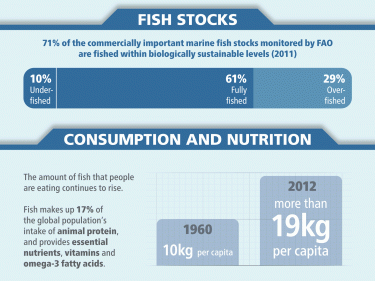More people around the world than ever rely on fisheries and aquaculture for food and as a source of income, a new report says.
But the United Nations Food and Agriculture Organisation (FAO) also warns that harmful practices and poor management threaten the industry’s sustainability globally.
FAO says illegal, unreported and unregulated (IUU) fishing is a major threat to marine ecosystems.
IUU fishing also impacts negatively on livelihoods, local economies and food supplies, it adds.
Scotland has built a strong reputation for its pioneering conservation initiatives in recent years, helping many key stocks to thrive, and FAO wants to see more countries comply with an international code of conduct for responsible fishing.
Its State of World Fisheries and Aquaculture report says fish remains among the most traded food commodities worldwide, worth about £77billion in 2012, and is playing an increasingly critical role for many economies.
According to FAO, global fisheries and aquaculture production totalled 158million tonnes in 2012.
This was about 10million tonnes more than 2010.
The rapid expansion of aquaculture is driving this growth,” FAO says, adding: “Fish farming holds tremendous promise in responding to surging demand for food which is taking place due to global population growth.
“At the same time, the planet’s oceans – if sustainably managed – have an important role to play in providing jobs and feeding the world.”
FAO director-general Jose Graziano da Silva says fishing and aquaculture can help to eliminate hunger,
promote health and reduce poverty around the world.
He adds: “In a world where more than 800million continue to suffer from chronic malnourishment and where the global population is expected to grow by another 2billion to reach 9.6billion people by 2050…we must meet the huge challenge of feeding our planet, while safeguarding its natural resources for future generations.
“Never before have people consumed so much fish or depended so greatly on the sector for their well-being.
“We need to look beyond the economics and ensure that environmental well-being is compatible with human well-being in order to make long-term sustainable prosperity a reality for all.
“To this end, promoting responsible and sustainable fisheries and aquaculture is central to our work and purpose.
“The health of our planet as well as our own health and future food security all hinge on how we treat the blue world.”
FAO says the share of fisheries production used by humans for food in 2012 was a record 85%-plus, at 136million tonnes, compared with about 70% in the 1980s.
At the same time, per capita fish consumption has nearly doubled.
The report estimates that fisheries and aquaculture now support the livelihoods of 10–12%of the world’s population.
FAO says less than 30% of monitored, global wild fish stocks are currently overfished, an improving trend.
However, it adds that aquaculture needs to become less dependent on wild fish for feeds and introduce greater diversity in farmed culture species and practices.


